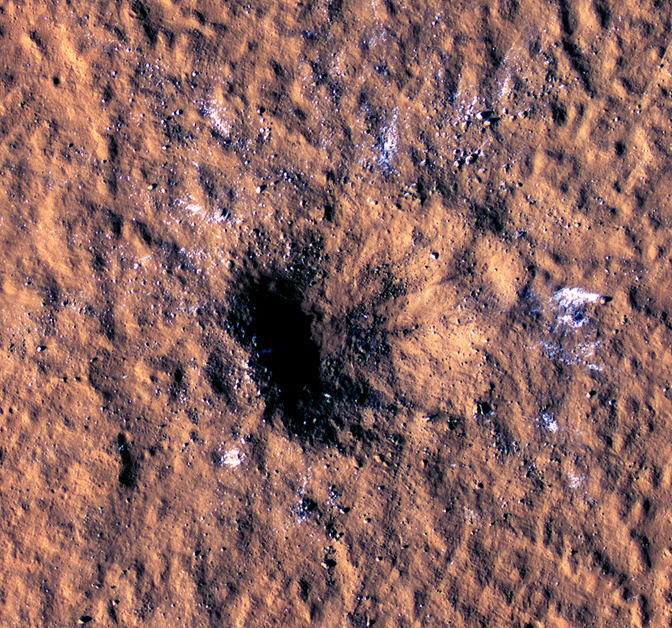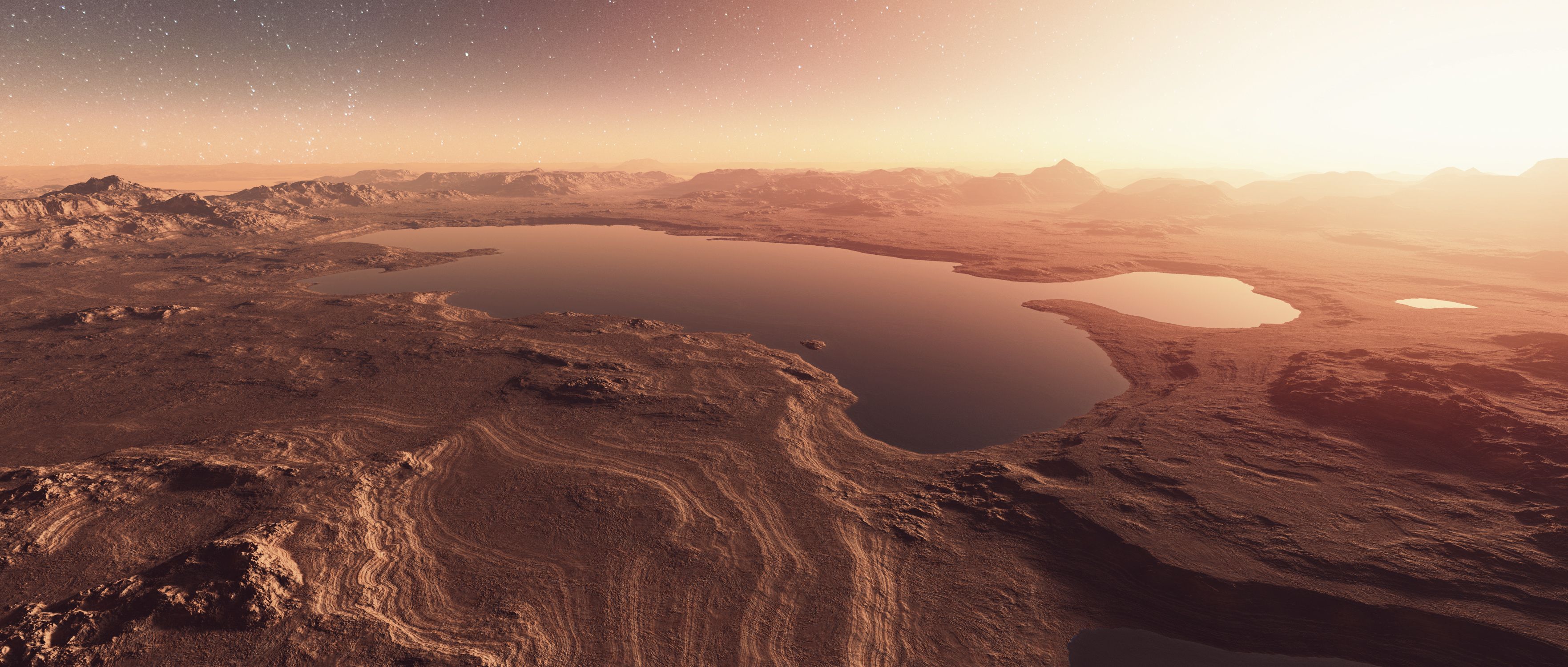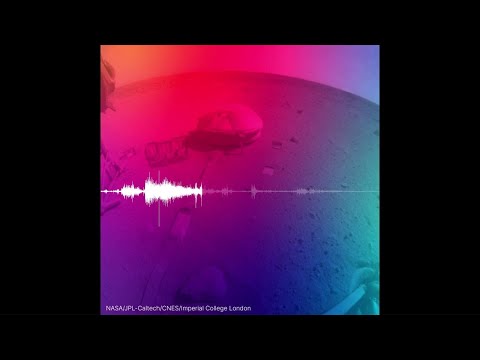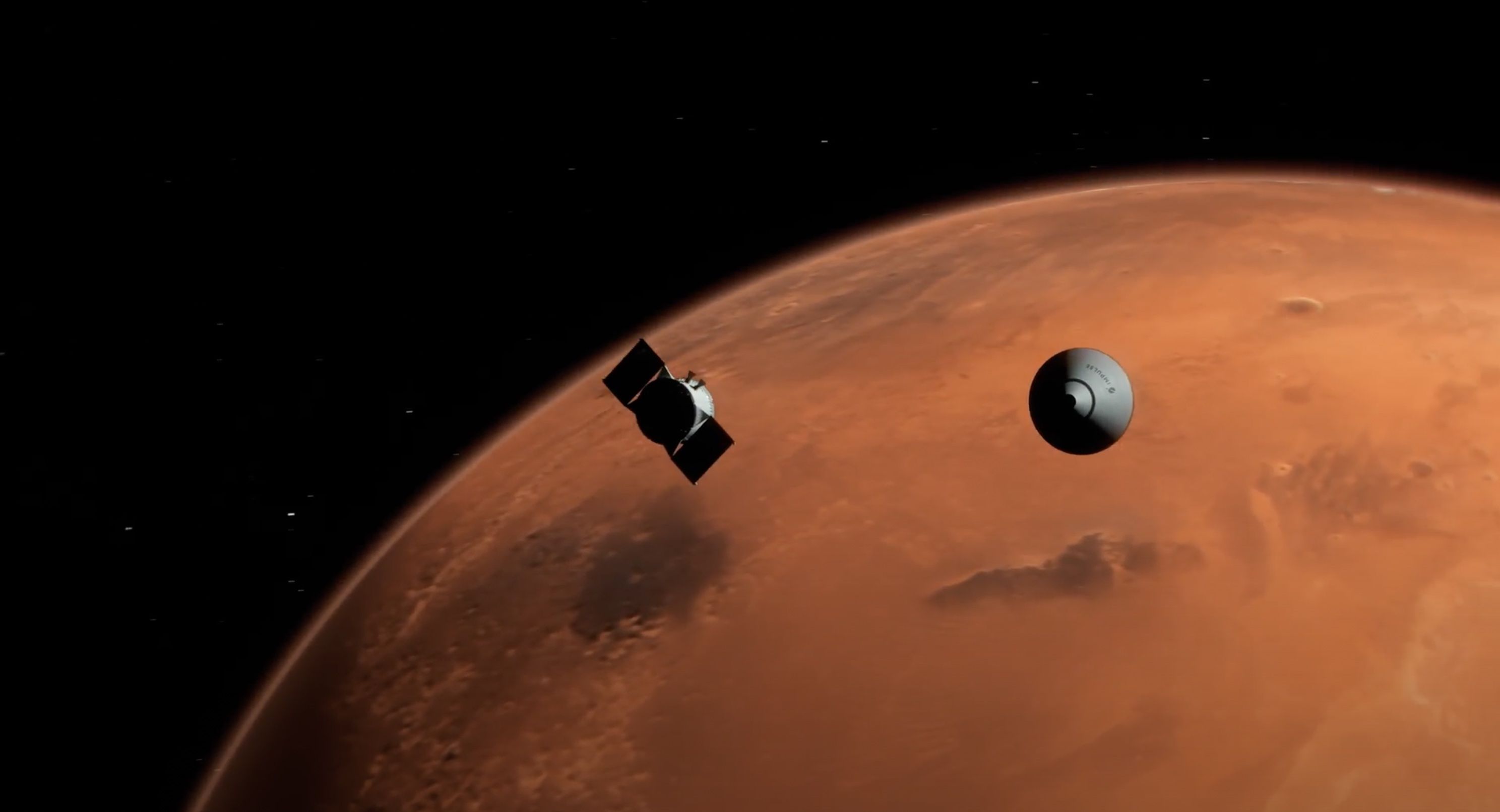The meteor caused a “marsquake” last December that left behind a new crater 492 feet across and 70 feet deep.

NASA/JPL-Caltech/University of Arizona
When Mars started shaking on Christmas Eve 2021, NASA’s InSight lander felt the movement. At first, scientists remotely recording and monitoring the Marsquake had no idea what caused the trembling. That all changed when they found a crater on the Martian surface unlike any seen before, eventually piecing together that a meteor struck the red planet, causing the magnitude-4 Marsquake.
NASA’s Jet Propulsion Lab in Pasadena, California, just laid out how the InSight lander recorded the quake, and how subsequent work with NASA’s Mars Reconnaissance Orbiter helped scientists find a new crater 492 feet across and 70 feet deep. Pairing the events together—as chronicled in two papers published concurrently on October 27 in the journal Science—NASA researchers explain how they used images and seismic data to come up with a new perspective on the Mars events.

“It’s unprecedented to find a fresh impact of this size,” Ingrid Daubar of Brown University, who leads InSight’s Impact Science Working Group, says in a news release. “It’s an exciting moment in geological history, and we got to witness it.”
Just studying the characteristics of the impact provides important data, according to one of the study’s authors, because they provide a seismic fingerprint that is different from past observations.
When the meteor—estimated to span 16 to 39 feet, small enough to have burned up in Earth’s atmosphere, but not in Mars’s thin atmosphere, which is just 1 percent as dense as our planet’s—struck Mars, it excavated boulder-size chunks of ice buried closer to the Martian equator than ever found before, sending debris up to 23 miles away.
In almost four years of InSight roaming Mars, it has recorded over 1,300 Marsquakes, but this was the first that generated surface waves, a rippling across the top of the planet’s crust.
Identifying the cause for the December 24, 2021 event didn’t take a major first step until the Malin Space Science Systems team in San Diego spotted what appeared to be a new crater on February 11 of this year. With the Mars Color Imager producing daily maps of the entire planet for scientists to track weather changes, the teams discovered that the new crater was timed with changes to dust patterns. Pinpointing the 24-hour period in which the impact likely occurred, combined with the seismic epicenter data, “conclusively” demonstrated that a meteoroid impact caused the large Marsquake.
This content is imported from youTube. You may be able to find the same content in another format, or you may be able to find more information, at their web site.NASA’s InSight Records the Sound of a Martian ImpactWatch on

“The image of the impact was unlike any I had seen before, with the massive crater, the exposed ice, and the dramatic blast zone preserved in the Martian dust,” Liliya Posiolova, lead of the Orbital Science and Operations Group at Malin, says in the news release. “I couldn’t help but imagine what it must have been like to witness the impact, the atmospheric blast, and debris ejected miles downrange.”

Scientists have long attempted to establish the rate at which craters appear on Mars to help refine the planet’s geological timeline. New craters also expose materials below the surface. In this case, large chunks of ice scattered by the impact were viewed with a high-resolution color camera and potentially offer a “vital resource” for future astronauts, should they need it for water, agriculture, or rocket propellant, JPL says. Buried ice has never been spotted this close to the Martian equator, which, as the warmest part of Mars, is an appealing location for an astronaut landing.
Not only is the mystery of the Christmas Eve Marsquake solved, but it may provide a fresh approach to future Mars exploration.
Source: www.popularmechanics.com








